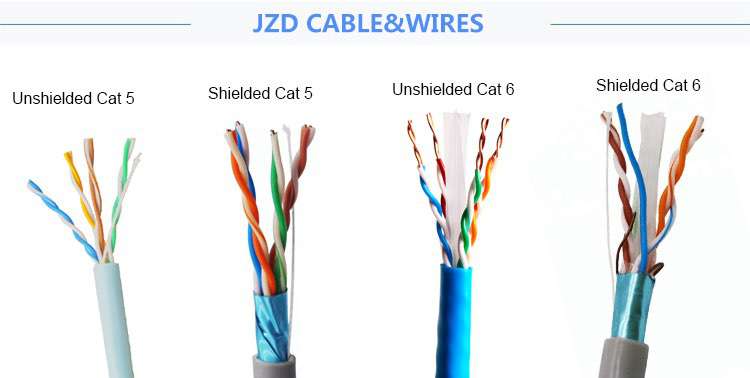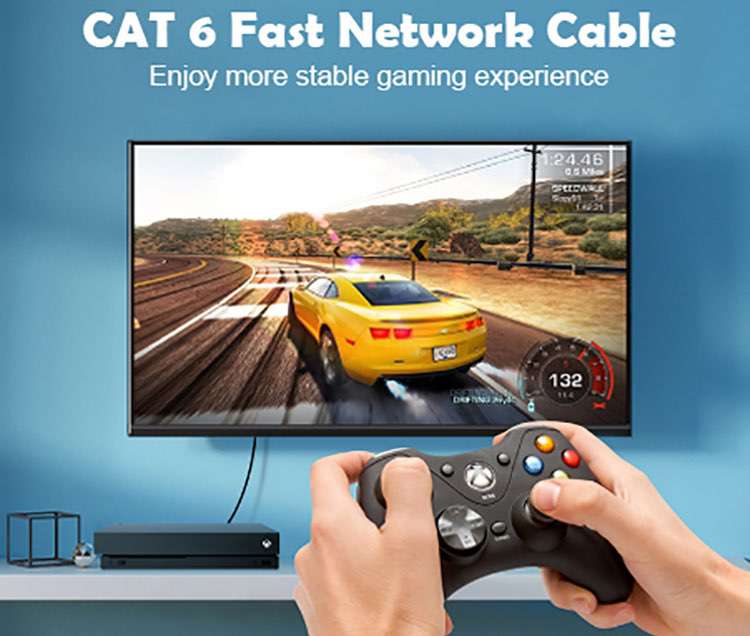 Author: Joey Wan
Author: Joey Wan  October 23,2020
October 23,2020
Do you have a broadband upgrade but the network speed is still the same as before, and the test speed is not up to the standard? What is going on? As the main carrier of wired transmission, how much influence will the network cable have on our surfing experience?
First of all, we need to know that the network cable is an indispensable carrier for connecting to the local area network. It is mainly divided into the optical cable (optical fiber), coaxial cable (signal cable), network cable, which is the most used one.
The network cable is a pair of mutually insulated metal wires to twist to resist electromagnetic interference with frequencies below 25MHz.Twisting two insulated copper wires to each other at a certain density can reduce the degree of signal interference. The radio waves radiated by each wire during transmission will be offset by the radio waves emitted by the other wire.Network cables are classified according to the ISO/IEC 11801 standard. The common ones are Cat 5 and Cat 5e, Cat 6, and Cat 6a cable. The diameter of the cat5 cable is thin and the diameter of the cat6 cable is thick.

Cat 5 cable: a type of cable that has increased winding density and a transmission bandwidth of 100MHz. It is used for voice transmission and data transmission with a maximum transmission rate of 100Mbps. It is mainly used for 100BASE-T and 10BASE-T networks.
Cat 5e cable: less attenuation and less crosstalk, it increases the test requirements of near-end crosstalk power and compared to Cat5 cable, and has higher attenuation to crosstalk ratio (ACR) and signal-to-noise ratio, and smaller delay error, Performance has been greatly improved. The maximum bandwidth of Cat 5e is 100MHz.
Cat6 cable: The transmission bandwidth of this type of cable is 250MHz, and the comprehensive attenuation crosstalk ratio (PS-ACR) of the Cat6 wiring system should have a large margin at 200MHz, which provides twice the bandwidth of the Super Cat5. The transmission performance of Cat6 cabling is much higher than that of the Super Cat5 standard and is most suitable for applications with a transmission rate of 1Gbps. An important difference between Cat6 and Cat5 is that it improves the performance of crosstalk and return loss. For a new generation of full-duplex high-speed network applications, excellent return loss performance is extremely important.
Cat7 cable: the cable is a twisted pair approved in 2002 in the ISO/IEC 11801 Cat 7/F level standard. It is mainly used to adapt to the application and development of 10 Gigabit Ethernet technology. But it is no longer an unshielded twisted pair, but a shielded twisted pair, so its transmission frequency can reach at least 600 MHz, and the transmission rate can reach 10 Gbps.

How to Choose Network Cable
We can use magnets to distinguish whether it is an iron core wire. If the network cable can be attracted by a magnet (including slight attraction), it means it is an iron core wire. The iron core wire has a large resistance, which seriously affects the transmission efficiency and transmission distance, so it is not recommended order. High-quality network cables generally use copper as the core. Even for poorer wires, aluminum should be used as the core. You can also peel off a little network cable and look at the thickness of the core. A thin core will also affect the transmission efficiency, so you should choose a relatively thick core.
JZD cable is a professional wires and cables factory with a 20-year production experience and more than ten years of export experience. Providing wires and cables for more than 1,000 engineering projects worldwide.
